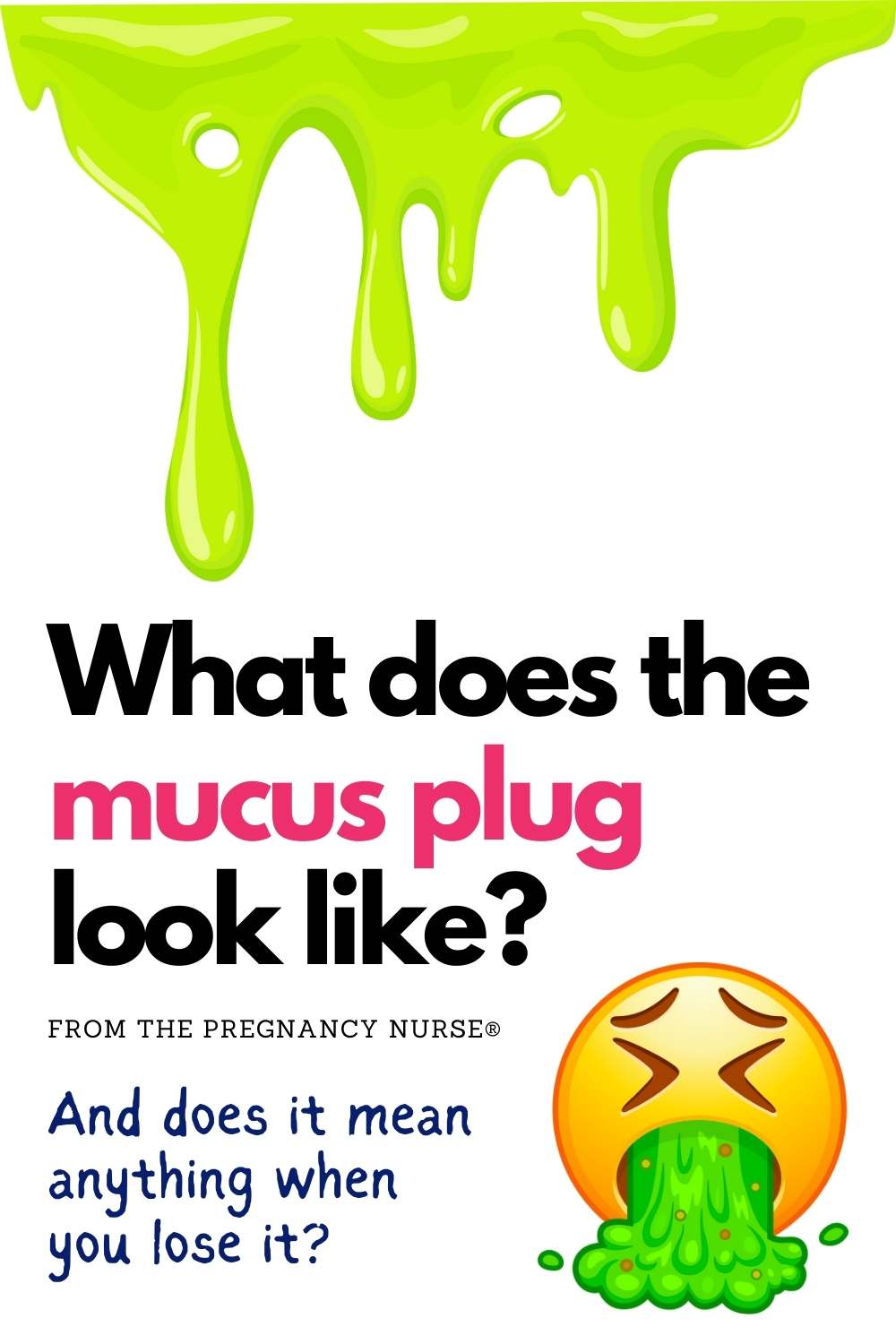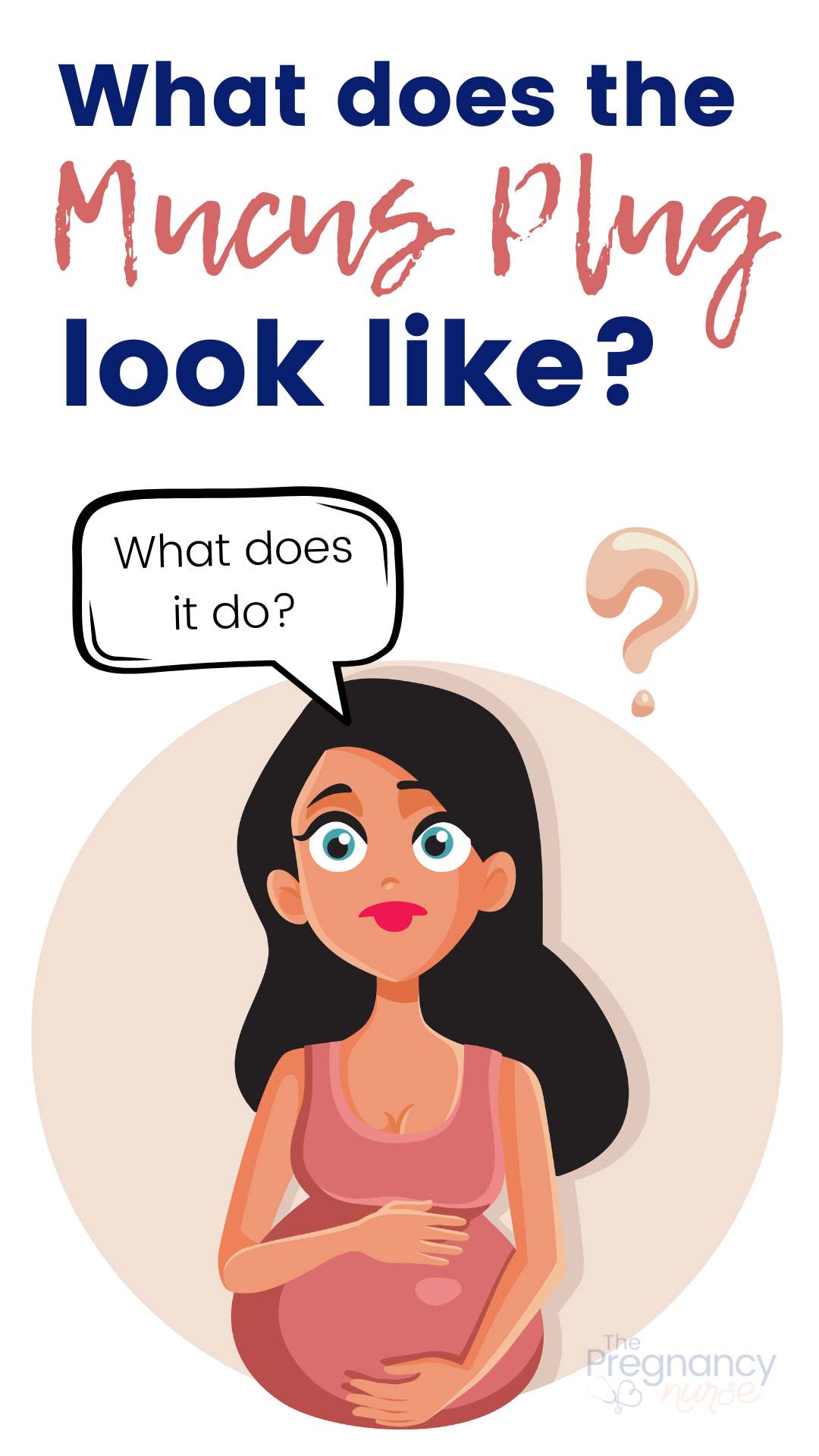📣 YOU are clearly getting prepared for pregnancy, birth & beyond — but do you wish your partner was more involved (looking for a teammate rather than just a cheerleader)? Couples love THIS! 💛🧡💚
Your mucus plug is a magical thing that keeps baby safe during the first couple of trimesters, but it often “falls-out” later in pregnancy. What does it look like, what does it mean and where do you go if you think you’ve lost it? — Let’s explore those answers. 🙂
Before we get going, if you’re considering your mucus plus — have you also considered your birth plan? Let me help you make yours as helpful as it can be right here:
What is the Mucus Plug?
Before we get into what it looks like — I want to explain a bit about what it is (and it will also help you understand a bit more about what it looks like, I hope).
So, as far as I hear as your baby is developing your uterus sort of makes a negative pressure to where the things in your vaginal canal move towards the opening to the uterus (your cervix).
That means, what is in the vaginal canal:
- Vaginal Mucus
- Possibly blood
- Semen
- Sluffed-off skin cells
Create the mucus plug.
You can think of it as a low-grade vacuum sort of sucking those things into the cervix area.

Why is the mucus plug made?
While we definitely don’t have all the answers, it makes sense that it would want to make a “dam” to protect the baby as much as possible (especially during early pregnancy) from anything that enters the vaginal canal.
The idea is that helps prevent infection in the womb area.
What does the mucus plug look like?
Honestly, the name is a pretty good descriptor of it.
Sometimes I hear people say they have some mucus-y discharge and think it’s their plug.
A couple of thoughts on that:
Your mucus plug doesn’t look anything like regular mucus — anything you normally blow from your nose, or find coming from your vagina is normally somewhat sticky, but fairly loose. The mucus plug does not look like that.
The mucus plug has had months to dry-up and it shows — it is a THICK. Often “chunky” (sorry if this is too TMI but I figure if you wanted to come here for answers, I’m going to give them). I think it’s more a texture between rubber and a soft cheese. It normally comes out all at once or in chunks.
It’s NOT clear — Most often it’s a darker yellow color and usually has some dark brown to it (that’s old blood).

Where do you find your mucus plug after it comes-out?
Personally, I saw mine in the toilet after I peed. And yes, I dry-heaved. Mucus is not my thing. I know, you think that’s weird for a nurse but we all have our bodily fluids we still hate.
Most often I hear about finding it in the toilet, or in your underwear.
What to do when it comes out?
The mucus plug does show that your cervix is softening, possibly opening.
If you’re before 36’ish weeks — I’d call your provider the next day — providing that is your only symptom. If you have other labor symptoms I’d call them sooner. I think they may want to see you, or at least keep an eye on you. It could be a symptom of preterm labor.
I have heard that the mucus plug, if you lose it early, can also re-generate. However, they need to keep an eye on you if you’ve actually lost it.
If you’re past 36 weeks I’d mention it at your next appointment. I’d also keep an eye out for any other labor signs.
Most often the mucus plug is a sign that labor is coming in the next couple of weeks. That’s it. It’s not showing that you’re going to have the baby any minute and it, alone, is NOT a reason to head into the hospital. Look for other symptoms.
I wouldn’t save it, although if it makes you feel better you can always take a photo of it to show a provider.
Yes, I have had patients bring me theirs in a Tupperware — not necessary. You can flush it. 🙂
Want to know more about labor signs? — check out these posts:
- 4 Signs You’re Almost In Labor
- Signs You Are Dilating: Symptoms Of Cervical Dilation
- 5 Signs Your Birth Is Going To Be Hard
- When Should I Stop Working During Pregnancy?
- The MOST Traumatic Things In Labor & Delivery
What other signs of labor to watch for?
Great question — it’s important to realize that the mucus plug is just one of the things that can happen close to labor.
There are lots of other signs:
- Contractions
- Your water breaking
- Stomach/bowel upset
- Cramping
Don’t miss my super helpful post all about the signs of labor. Great info for pregnancy!
If you’re sitting there thinking — man, there’s a lot to know about all of this, I totally understand that.
Truth bomb: Your provider really just doesn’t have time at appointments to go over all this basic information. But, don’t worry I have an easy solution for you!
The Online Prenatal Class for Couples is going to break down all this complicated labor mumbo-jumbo into easy to understand bits that you can consume whenever you’re ready.
It’s best for couples who:
- Are busy and need a birth class to fit THEM (rather than the other way around)
- Want their partner to be a teammate rather than just a cheerleader
- Looking for an all-in-one birth class that will cover whatever type of birth they end-up having (because you just never know, unfortunately)
- Want evidence-based advice from an expert they can trust.
We go into the signs of labor, what to do while you’re laboring at home and when to go to the hospital in that class. Couples find it SO helpful (check out the reviews here).
It’s available 24/7 so even if it’s midnight I’m sitting there just waiting for you to come learn.
Will you have your baby soon?
The best predictor of when you’ll have your baby is your due date. However, I do have a when will I go into labor quiz that you might find helpful.
Wondering more about when baby will come — check out these posts:
- Can I Be Induced At 37 Weeks Due To Pain
- 40 Weeks + A Day And No Sign Of Labor?
- To The Mom Who Thinks She’ll Go Early.
- 39 Weeks Pregnant With Extreme Fatigue & Tiredness
Either way, I wish you the BEST of luck. Those last few weeks of pregnancy are no joke. Please be kind to yourself. Please get prepared and please know that you’re doing a great job at something that is VERY hard. You’re amazing, and you’re growing another human inside your own body!
Have you checked a birth class off your to do list✅? I have a few I recommend:
❤️ Best class for couples {per BabyList}
👩💻 Best class available on demand
⚡ Best class JUST for pain management
👶 Best Postpartum-Only Prep
❤️🧡💛💚💙💜 My favorite class is here.
Now is the time to get started!
Want to do a vibe check before diving into the whole thing with me? — check out my free labor pro tips. It’s your first step toward getting in the driver’s seat of your birth.










 100+ Fascinating Pregnancy & Labor Statistics: Be Informed What Is Normal
100+ Fascinating Pregnancy & Labor Statistics: Be Informed What Is Normal
